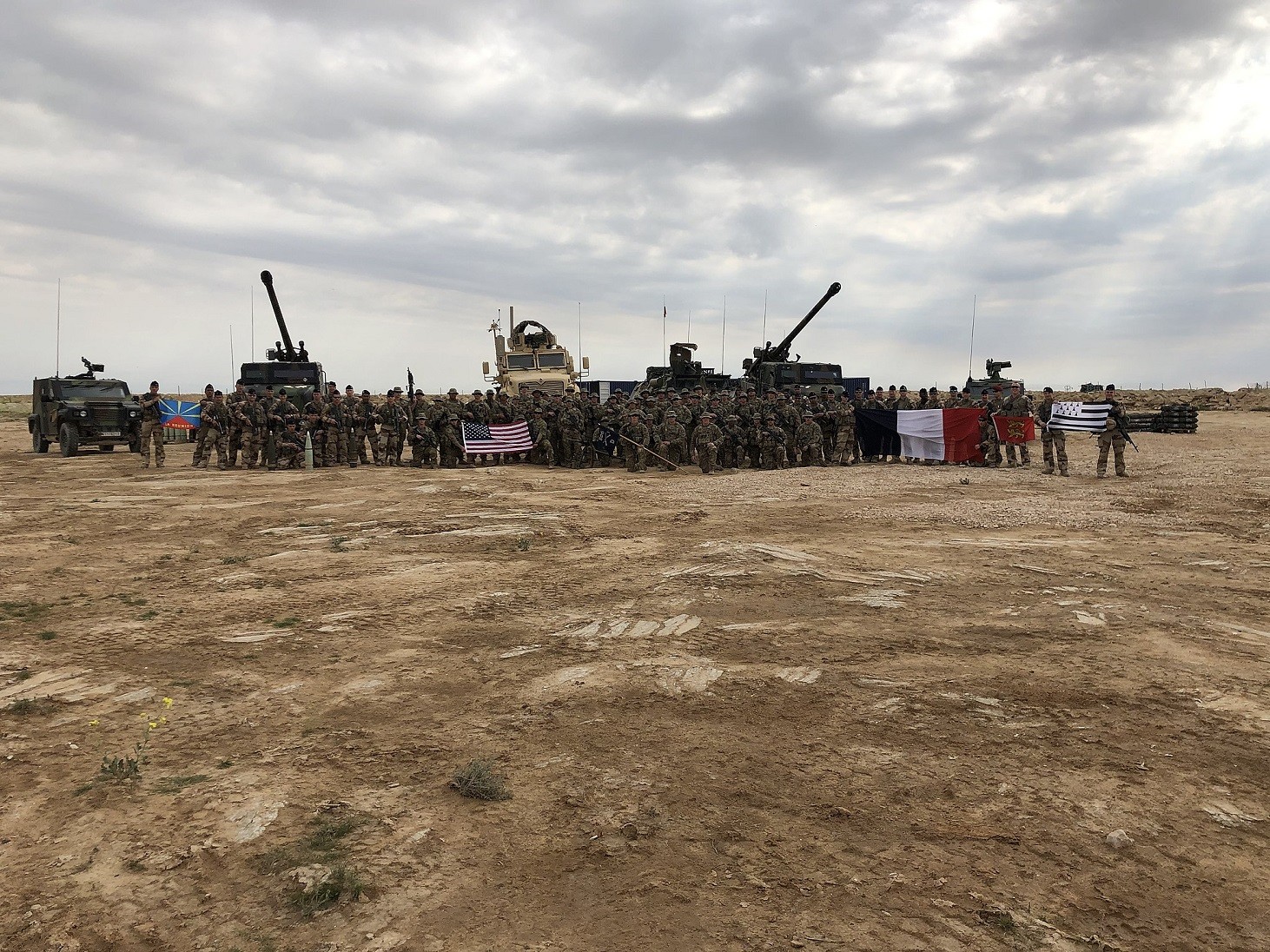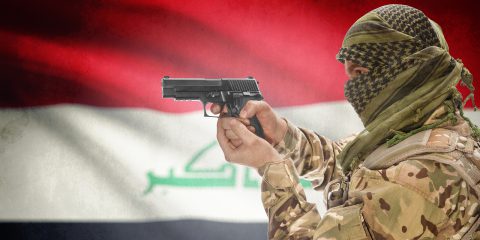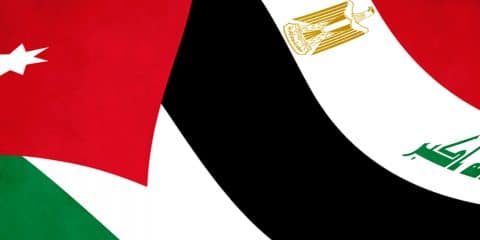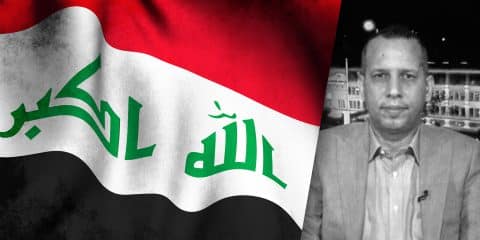Only an integrated political, military and economic strategy targeting the Iranian system in all its aspects, with a long-term commitment to local allies and the mission, can succeed.
Over the last two weeks, US forces have been significantly reducing their footprint in Iraq. Redeployments from three bases have taken place – al-Qaim, on the Syria-Iraq border, Qayyara Airfield West, 60 km. south of Mosul, and lastly K1, in the area of Kirkuk. Nonessential personnel have also been withdrawn from the US Embassy in Baghdad.
All three bases are located in close proximity to positions of the Iran-supported Shia militias currently engaged in insurgency against the US presence in Iraq. The redeployment is taking place amid a persistent and growing hum of rumors regarding a possibly imminent sharp US counter-escalation, and/or a possible attack by the militias on US positions or personnel.
According to official US statements, the “repositioning” and the embassy evacuation are in response to “Iraqi security forces’ success in the campaign against Daesh” and “restricted travel options resulting from the global coronavirus pandemic,” respectively. But the shift in the US presence also serves to reduce the target bank available to the Shia militias. Newly deployed US defense systems – C-RAMS and Patriot batteries – are set to be in position in the coming days. Against the backdrop of the global pandemic, a strategic hinge point has been reached.
THE FIRST indications of Shia militia insurgency came in early 2019. The tempo of attacks increased throughout the year. The situation escalated sharply in December, in the events culminating in the killing by the US of Islamic Revolutionary Guard Corps Quds Force commander Qasem Soleimani and Shia militia head Abu Mahdi al-Muhandis on January 3.
The intention of the insurgency is to secure a complete US withdrawal from Iraq. This would allow the country to be organized under the de facto military and political domination of Iran and its proxies.
The Kataib Hezbollah, Nujaba and Asaib Ahl al-Haq militias are playing the key role. A new formation, called Usbat al-Thairen (League of Revolutionaries), has also appeared. This group claimed responsibility for the latest attacks. But the names are less important. The controlling factor behind all these formations (and other, larger and more established groups such as the Badr Organization) is the IRGC, i.e., Tehran.
On March 7, 30 Katyusha rockets were launched at Camp Taji; three coalition personnel were killed. The US responded in force against five targets of Kataib Hezbollah south of Baghdad. This, in turn, was followed by another launching of at least 25 107-mm. rockets on Taji on March 14; three additional US troops were wounded. At least four additional militia attacks around US military and diplomatic facilities have taken place in the subsequent two weeks.
Kataib Hezbollah, considered by many analysts to be the nerve center and backbone of the IRGC/Quds Force’s presence in Iraq, held a drill in response to the US redeployment on March 26. According to a report on a militia Telegram channel, the Hunting Crows drill simulated the militias’ response to four types of possible US attacks, including an air assault. A KH statement on its website following the drill noted: “We spotted suspicious American [military] movements…. It is necessary for the mujahideen to prepare with the needed manpower and equipment to tackle what the enemy intends.”
US OFFICIALS and US allies are currently deeply divided on two related questions: first, whether to respond substantively to the Shia militia insurgency at all; second, the form such a response should take, if needed.
The UK did not take part in the response to the Taji attacks. According to The Washington Post, London did not believe that the available evidence of militia/KH responsibility met the “legal threshold” justifying a response. Britain, France and the Czech Republic are currently withdrawing personnel from Iraq because of the pandemic.
Within the US command, also, the form and extent of any response appear to be under dispute. Secretary of State Mike Pompeo supports extended action against the Shia militia insurgency. But a leaked letter from Robert Wright, the officer commanding US forces in Iraq, argued against any such action. The letter suggested that an effective move would require larger forces than those currently available in Iraq. President Donald Trump has not yet made his decision.
A narrow military move against Kataib Hezbollah, divorced from any broader political context, is unlikely to achieve a great deal. KH is only one element of a much broader Iranian project of two decades’ standing to hollow out Iraq and fill its shell with an Iran-controlled political/military system.
This project is already well advanced. Its political iteration, the Fatah Alliance, controls 48 seats in the 329-member parliament. Shia parties, closely or less closely linked to Iran, have over half the seats in the assembly.
Yet powerful forces in the country remain opposed to the Iranian system. The US’s Kurdish allies, the US-formed and trained Counter-Terrorism Service within the military, secular and Sunni political trends, Prime Minister-designate Adnan al-Zurfi, the (now dispersed) youthful Shia demonstrators who chanted en masse against Iran’s system at great personal risk for six months all form elements available for any strategy intended to take on the Iranian system in the country.
What is needed is neither counterterrorism nor classic counterinsurgency alone. Only an integrated political, military, economic and intelligence strategy targeting the Iranian system in all its aspects could succeed.
Such a strategy would not require a large commitment of conventional US and allied forces on the ground. The Iranians have never had such a presence. They have advanced very far without it.
Any such strategy should include the direct targeting of IRGC and other Iranian personnel in Iraq and beyond its borders. Iran seeks to conduct a war by proxy, in which only the (expendable) proxies pay the price. The direct Iranian response to the killings of Soleimani and Muhandis was preceded by an Iranian warning to the government of Iraq, enabling the US to avoid fatalities. This enabled Iran to save face by claiming to have responded, while avoiding further retribution. The real response, with no warning, which cost coalition lives, came on March 7. But this was carried out by the militias. There is no reason to grant Tehran the war it wants.
A full-spectrum challenge of this type to the Iranian system in Iraq would not require the presence of conventional infantry divisions. What it would require is a consistent, long-term, multidimensional commitment to local allies and to the mission. It remains to be seen whether, in the wake of the escalating Shia militia attacks, such a strategy will be formulated and implemented.
Published in The Jerusalem Post 03.04.2020
JISS Policy Papers are published through the generosity of the Greg Rosshandler Family.
photo: Philleydelphia / CC BY-SA 4.0








 - בניית אתרים
- בניית אתרים